511 start with S start with S
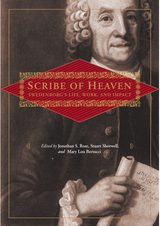
The essays in this volume testify to the far-reaching effects of Emanuel Swedenborg’s works in Western culture. From his early days as an ambitious young scientist in the ferment of the eighteenth-century Enlightenment Europe, through his mid-life entrance into an ongoing experience of the spiritual world, to his last decades as a researcher of things spiritual, Swedenborg built a career that left a unique legacy. His vivid descriptions of the nonphysical realm made a powerful impression on minds as diverse as Goethe, Blake, Emerson, Yeats, and Borges.
This book serves as a self-contained resource on Swedenborg’s life and thought and as a gateway into further exploration of the labyrinthine garden of Swedenborg’s works. It includes a biography, rich in fascinating detail; lively overviews of the content and history of Swedenborg’s writings on spiritual topics; and essays tracing Swedenborg’s impact in various regions of the world.
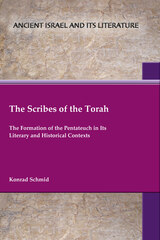
A revised view of the Pentateuch with consequences for the broader literary history of the Bible
This collection of thirty-one studies on the Pentateuch represents more than twenty years of Konrad Schmid’s research and publications advocating for a new view of the Pentateuch’s formation. Schmid’s essays present the case for a Persian period Priestly document that provided a basic narrative thread to the Torah, which included separate, pre-Priestly components of narratives in Genesis and the Moses story. Schmid’s open discussion includes evidence from various fields, such as literary history, comparative cultural history, historical linguistics, epigraphy, and archaeology. The essays are divided into eight sections usefully structured around the themes of the Pentateuch in the Enneateuch, the history of scholarship, the formation of the Torah, Genesis, the Moses story, the Priestly document, legal texts, and the Pentateuch in the history of ancient Israel’s religion.
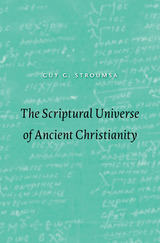
The passage of texts from scroll to codex created a revolution in the religious life of late antiquity. It played a decisive role in the Roman Empire’s conversion to Christianity and eventually enabled the worldwide spread of Christian faith. The Scriptural Universe of Ancient Christianity describes how canonical scripture was established and how scriptural interpretation replaced blood sacrifice as the central element of religious ritual. Perhaps more than any other cause, Guy G. Stroumsa argues, the codex converted the Roman Empire from paganism to Christianity.
The codex permitted a mode of religious transmission across vast geographical areas, as sacred texts and commentaries circulated in book translations within and beyond Roman borders. Although sacred books had existed in ancient societies, they were now invested with a new aura and a new role at the core of religious ceremony. Once the holy book became central to all aspects of religious experience, the floodgates were opened for Greek and Latin texts to be reimagined and repurposed as proto-Christian. Most early Christian theologians did not intend to erase Greek and Roman cultural traditions; they were content to selectively adopt the texts and traditions they deemed valuable and compatible with the new faith, such as Platonism. The new cultura christiana emerging in late antiquity would eventually become the backbone of European identity.
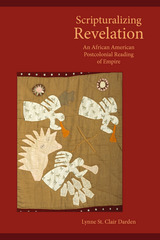
A fresh contribution to the growing body of New Testament scholarship on empire, both ancient and modern
Darden’s reading of Revelation examines John the Seer’s rhetorical strategy, in general, and imperial cult imagery in chapters 4 and 5, in particular, through the lens of an African American scripturalization supplemented by postcolonial theory. The scripturalization proposes that John the Seer’s signifyin(g) on empire demonstrated that he was well aware of the oppressive nature of Roman imperialism on the lives of provincial Asian Christians. Yet, ironically, John reinscribed imperial processes and practices. Darden argues that African American biblical scholarship must now attend adequately to these complex cultural negotiations lest it find itself inadvertently feeding the imperial beast.
Features:
- Relates the potential for African American cooption by the U.S. Empire to the cooption by the Roman Empire both thematized and performed in Revelation
- Book-length study on postcolonial African American biblical hermeneutics
- A reading supplemented by postcolonial theory that better addresses the hybridity of African American identity

Readings by South Pacific islanders
This book offers readings of the Bible by native biblical critics from the South Pacific (Pasifika). An essay from editor Jione Havea introduces the volume by locating these essays within islander criticism and by explaining the flow of the book. Essays are presented in three sections. “Island Twists” offers readings that twist, like a whirlpool, biblical texts around insights of Pasifika novelists, composers, poets, and sages. “Island Turns” contains contextual readings that turn biblical texts toward Pasifika. “Across the Sea” contains responses by biblical critics from across the sea.
Features
- Contributions to islander criticism
- A showcase of texts by native writers, poets, and composers
- Crosscultural and postcolonial readings

“This perceptive and accessible edition brings Tulsidas’s version [of the Ramayana], the most widely read across Northern India, to English-speaking audiences, giving readers a fresh glimpse into the tale’s impressive energy.”—Publishers Weekly
Tulsidas’s Rāmcaritmānas, written in the sixteenth century in a literary dialect of classical Hindi, has become the most beloved retelling of the ancient Ramayana story across northern India. The revered masterpiece recounts the epic story of Ram’s exile and his journeys, and it is recited by millions of Hindus today.
The Sea of Separation presents some of the poem’s most renowned episodes—Ram’s battles with demons, the kidnapping of his wife Sita by Ravana, his alliance with a troop of marvelous monkeys, and, finally, the god Hanuman’s heroic journey to the island city of Lanka to find and comfort Sita.
This new translation into free verse conveys the passion and momentum of the inspired poet and storyteller.
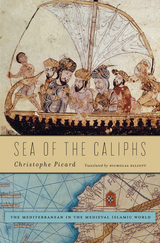
“How could I allow my soldiers to sail on this disloyal and cruel sea?” These words, attributed to the most powerful caliph of medieval Islam, Umar Ibn al-Khattab (634–644), have led to a misunderstanding in the West about the importance of the Mediterranean to early Islam. This body of water, known in Late Antiquity as the Sea of the Romans, was critical to establishing the kingdom of the caliphs and for introducing the new religion to Europe and Africa. Over time, it also became a pathway to commercial and political dominion, indispensable to the prosperity and influence of the Islamic world. Sea of the Caliphs returns Muslim sailors to their place of prominence in the history of the Islamic caliphate.
As early as the seventh century, Muslim sailors competed with Greek and Latin seamen for control of this far-flung route of passage. Christophe Picard recreates these adventures as they were communicated to admiring Muslims by their rulers. After the Arab conquest of southern Europe and North Africa, Muslims began to speak of the Mediterranean in their strategic visions, business practices, and notions of nature and the state. Jurists and ideologues conceived of the sea as a conduit for jihad, even as Muslims’ maritime trade with Latin, Byzantine, and Berber societies increased.
In the thirteenth century, Christian powers took over Mediterranean trade routes, but by that time a Muslim identity that operated both within and in opposition to Europe had been shaped by encounters across the sea of the caliphs.
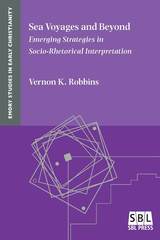
Explore insights, methodologies, and advances in socio-rhetorical interpretation
Essays in this volume from Vernon K. Robbins merge social and rhetorical strategies of interpretation and set the stage for how socio-rhetorical interpretation has developed in the context of research into the rhetoric of religious antiquity. This book contains “By Land and By Sea: The We Passages and Ancient Sea Voyages” (1978), which initially received widespread praise and then became an object of significant criticism. The volume includes Robbins’s varied, detailed responses to both encouragement and critique of his approach.
Features:
- Introduction to the collection by David B. Gowler
- Twelve essays that programmatically study early Christian texts using resources from the social sciences
- Reflections on the future of socio-rhetorical criticism
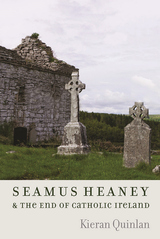
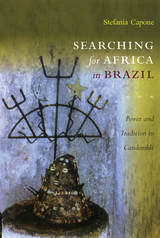
Challenging the usual interpretations of Afro-Brazilian religions as fixed entities, completely independent of one another, Capone reveals these practices as parts of a unique religious continuum. She does so through an analysis of ritual variations as well as discursive practices. To illuminate the continuum of Afro-Brazilian religious practice and the tensions between exegetic discourses and ritual practices, Capone focuses on the figure of Exu, the sacred African trickster who allows communication between gods and men. Following Exu and his avatars, she discloses the centrality of notions of prestige and power—mystical and religious—in Afro-Brazilian religions. To explain how religious identity is constantly negotiated among social actors, Capone emphasizes the agency of practitioners and their political agendas in the “return to roots,” or re-Africanization, movement, an attempt to recover the original purity of a mythical and legitimizing Africa.
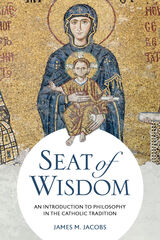
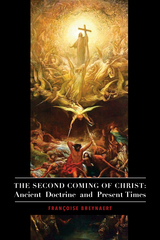
The great mystery of Christ's second coming is part of the core of Christian faith. And at long last, here is a book that explains what this truly means. And in doing so, we come to know the revealed meaning of history, which has nourished the hope of Christians through the ages.
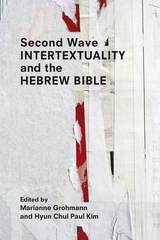
An innovative collection of inner-biblical, intertextual, and intercontextual dialogues
Essays from a diverse group of scholars offer new approaches to biblical intertextuality that examine the relationship between the Hebrew Bible, art, literature, sociology, and postcolonialism. Eight essays in part 1 cover inner-biblical intertextuality, including studies of Genesis, Judges, and Qoheleth, among others. The eight postbiblical intertextuality essays in part 2 explore Bakhtinian and dialogical approaches, intertextuality in the Dead Sea Scrolls, canonical critisicm, reception history, and #BlackLivesMatter. These essays on various genres and portions of the Hebrew Bible showcase how, why, and what intertextuality has been and presents possible potential directions for future research and application.
Features:
- Diverse methods and cases of intertextuality
- Rich examples of hermeneutical theory and interpretive applications
- Readings of biblical texts as mutual dialogues, among the authors, traditions, themes, contexts, and lived worlds
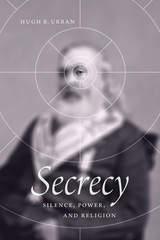
With Secrecy, Urban investigates several revealing instances of the power of secrecy in religion, including nineteenth-century Scottish Rite Freemasonry, the sexual magic of a Russian-born Parisian mystic; the white supremacist BrüderSchweigen or “Silent Brotherhood” movement of the 1980s, the Five Percenters, and the Church of Scientology. An electrifying read, Secrecy is the culmination of decades of Urban’s reflections on a vexed, ever-present subject.
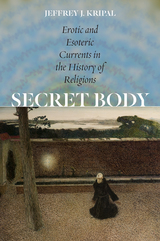
Kripal tells his story, biographically, historically and politically contextualizing each of the six books of his Chicago corpus, from Kali’s Child to Mutants and Mystics, all the while answering his censors and critics and exploring new implications of his thought. In the process, he begins to sketch out a speculative “new comparativism” in twenty theses. The result is a new vision for the study of religion, one that takes in the best of the past, engages with outside critiques from the sciences and the humanities, and begins to blaze a new positive path forward. A major work decades in the making, Secret Body will become a landmark in the study of religion.
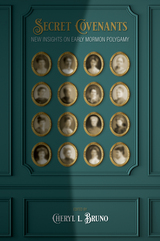
Navigating the intricate labyrinth of early Mormon plural marriage can be fascinating, frustrating, and often confusing. The essays in this volume venture into the depths of historical inquiry, presenting a diverse array of perspectives on the subject. Authored by a consortium of esteemed scholars and researchers in the field of Mormon studies, it addresses the nuanced intricacies of Joseph Smith’s involvement in plural marriage.
Delving into the core of this discourse, these experts meticulously analyze foundational documents, highlighting the complexities Joseph Smith faced in practicing plural marriage and shedding light on the legal aspects of polygamy in 1840s Illinois. It navigates lesser-known details of Smith’s proposals and relationships, including the enigmatic story of Fanny Alger.
Secret Covenants presents a balanced exploration. It critiques traditional portrayals, providing multiple viewpoints, such as the examination of Emma Smith’s vehement rejection of polygamy after her husband’s death, and an analysis of the societal impact on women within polygamous unions. Furthermore, the authors address evolving doctrinal debates triggered by the “Marriage Revelation” and its impact on Mormon philosophy and thought.
This anthology serves as a foundational resource for academic scholars, individuals interested in religious history, and anyone seeking to understand the many layers of Mormon plural marriage.
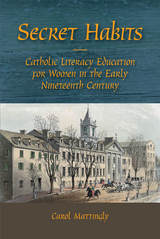
Mattingly shows that despite widespread fears and opposition, including attacks by vaunted northeastern Protestant pioneers of literacy, Catholic women nonetheless became important educators of women in many areas of America. They founded convents, convent academies, and schools; developed their own curricula and pedagogies; and persisted in their efforts in the face of significant prejudices. The convents faced sharp opposition from Protestant educators, who often played on anti-Catholic fears to gain support for their own schools. Using a performative rhetoric of good works that emphasized civic involvement, Catholic women were able to educate large numbers of women and expand opportunities for literacy instruction.
A needed corrective to studies that have focused solely on efforts by Protestant educators, Mattingly’s work offers new insights into early nineteenth-century women’s literacy, demonstrating that literacy education was more religiously and geographically diverse than previously recognized.
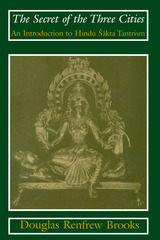

Lost in antiquity, rediscovered in 1896, and only recently accessible for study, The Secret Revelation of John offers a firsthand look into the diversity of Christianity before the establishment of canon and creed. Karen L. King offers an illuminating reading of this ancient text--a narrative of the creation of the universe and humanity and a guide to justice and salvation, said to be Christ's revelation to his disciple John.
Freeing the Revelation from the category of "Gnosticism" to which such accounts were relegated, King shows how the Biblical text could be read by early Christians in radical and revisionary ways. By placing the Revelation in its social and intellectual milieu, she revises our understanding of early Christianity and, more generally, religious thought in the ancient Mediterranean world. Her work helps the modern reader through many intriguing--but confusing--ideas in the text: for example, that the creator god of Genesis, a self-described jealous and exclusive god, is not the true Deity but a kind of fallen angel; or, in an overt critique of patriarchy unique in ancient literature, the declaration that the subordination of woman to man was an ignorant act in direct violation of the "holy height."
In King's analysis, the Revelation becomes not strange but a comprehensible religious vision--and a window on the religious culture of the Roman Empire. A translation of the complete Secret Revelation of John is included.
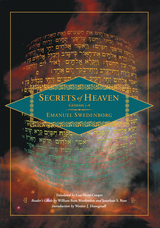
The first major theological work of the Swedish scientist-turned-seer Emanuel Swedenborg, Secrets of Heaven is in one sense a traveler's account. It reveals the unseen realms that await beyond death--the light, the warmth, and harmony of the angelic heavens and the varied darkness of the multitudinous hells. But in addition, the work offers a detailed examination of Genesis and Exodus, providing a model for a new way to understand the entire Bible. Prized for both the simplicity of its explanation and the breadth and depth of its vision, Swedenborg's reading of Scripture discloses layer upon layer of inner meaning, all without undermining the power and import of the literal word.
This first of the multivolume work contains an introduction by Wouter J. Hanegraaff, professor of History of Hermetic Philosophy and Related Currents at the University of Amsterdam, and a reader's guide by Swedenborgian scholar William Ross Woofenden and New Century Edition Series Editor Jonathan S. Rose.
The New Century Edition of the Works of Emanuel Swedenborg is a modern-language, scholarly translation of Swedenborg’s theological works. The series’ easy-to-read style retains the dignity, variety, clarity, and gender-inclusive language of Swedenborg’s original Latin, bringing his thought to life. Introductions and annotations by eminent, international scholars place Swedenborg’s writings in their historical context and illuminate obscure references within the text, enabling readers to understand and trace Swedenborg’s influence as never before.
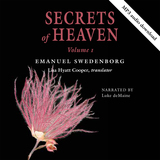
The first major theological work of the Swedish scientist-turned-seer Emanuel Swedenborg, Secrets of Heaven is in one sense a traveler's account. It reveals the unseen realms that await beyond death--the light, the warmth, and harmony of the angelic heavens and the varied darkness of the multitudinous hells. But in addition, the work offers a detailed examination of Genesis and Exodus, providing a model for a new way to understand the entire Bible. Prized for both the simplicity of its explanation and the breadth and depth of its vision, Swedenborg's reading of Scripture discloses layer upon layer of inner meaning, all without undermining the power and import of the literal word.
The New Century Edition of the Works of Emanuel Swedenborg is a modern-language, scholarly translation of Swedenborg’s theological works. The series’ easy-to-read style retains the dignity, variety, clarity, and gender-inclusive language of Swedenborg’s original Latin, bringing his thought to life.
This portable edition of Secrets of Heaven vol. 1 includes the text of the New Century Edition without the introduction, annotations, and other supplementary of the deluxe hardcover and paperback editions.
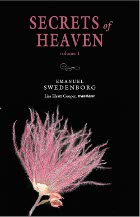
The first major theological work of the Swedish scientist-turned-seer Emanuel Swedenborg, Secrets of Heaven is in one sense a traveler's account. It reveals the unseen realms that await beyond death--the light, the warmth, and harmony of the angelic heavens and the varied darkness of the multitudinous hells. But in addition, the work offers a detailed examination of Genesis and Exodus, providing a model for a new way to understand the entire Bible. Prized for both the simplicity of its explanation and the breadth and depth of its vision, Swedenborg's reading of Scripture discloses layer upon layer of inner meaning, all without undermining the power and import of the literal word.
The New Century Edition of the Works of Emanuel Swedenborg is a modern-language, scholarly translation of Swedenborg’s theological works. The series’ easy-to-read style retains the dignity, variety, clarity, and gender-inclusive language of Swedenborg’s original Latin, bringing his thought to life.
This portable edition of Secrets of Heaven vol. 1 includes the text of the New Century Edition without the introduction, annotations, and other supplementary of the deluxe hardcover and paperback editions.
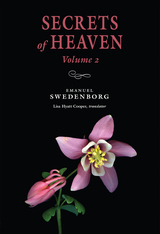
Secrets of Heaven is Emanuel Swedenborg’s magnum opus, a fifteen-volume work that delves into the inner, spiritual meaning of the Bible. Starting from the first verse, Swedenborg goes through Genesis and Exodus verse by verse, sometimes word by word, uncovering the fascinating teachings behind the literal account. By doing careful comparison of passages and tracing individual images and motifs through the Bible, he demonstrates that it contains a profound, coherent, and unified inner meaning.
The second volume covers Genesis 9–15, beginning with God’s covenant with Noah following the Flood and then following the familiar story of the patriarch Abraham. In the process, Swedenborg discusses the concept of regeneration, or spiritual rebirth, and describes the way the people act before and after rebirth. He also talks about an epoch of human history that he calls the ancient church and the spiritual state of the people in that church. Interspersed with the biblical commentary are chapters on related topics such as the lives of angels in heaven, how distance and time work in the spiritual world, and the nature of hell.
Secrets of Heaven provides essential insight into Swedenborg’s theology and lays the groundwork for the rest of his writings. This new translation, part of the New Century Edition series, makes his insights into Scripture and his accounts of his spiritual experiences more accessible than ever before.
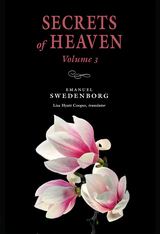
This third volume covers the inner meaning of Genesis 16–21, giving an account of the early stages of Jesus’ inward development, including the interactions of his human side and his divine side. It additionally addresses other topics, and in particular the true nature of the Last Judgment.
This new translation, part of the New Century Edition series, makes Swedenborg’s insights into Scripture and his accounts of his spiritual experiences more accessible than ever before.
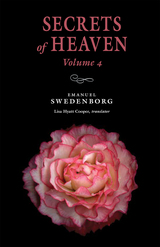
This fourth volume covers the inner meaning of Genesis 22–26, which on the surface recount God’s testing of Abraham and the generational shift that occurs as Sarah and Abraham die, Isaac and Rebekah marry, and Jacob and Esau are born. The intricacies of this narrative are interpreted as the processes Jesus went through inwardly as he united his human and divine natures and established a new religious culture on earth. Much of this volume also explores the concepts of correspondence and representation as underlying realities present in the natural and spiritual worlds and in the Bible.
This new translation, part of the New Century Edition series, makes Swedenborg’s insights into Scripture and his accounts of his spiritual experiences more accessible than ever before.
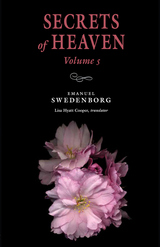
Secrets of Heaven is Emanuel Swedenborg’s magnum opus, a fifteen-volume work that delves into the inner, spiritual meaning of the Bible. Starting from the first verse, Swedenborg goes through Genesis and Exodus verse by verse, sometimes word by word, uncovering the fascinating teachings behind the literal account. By doing careful comparison of passages and tracing individual images and motifs through the Bible, he demonstrates that it contains a profound, coherent, and unified inner meaning.
This fifth volume continues the exposition with an examination of Jacob’s story, as found in Genesis 27–30. Jacob’s flight to his uncle Laban’s house, where he initially labors for the right to marry, then weds Leah and Rachel, and eventually rises to great prosperity, parallels the stage of Jesus’ transformation in which his earthly self (represented by Jacob) had to climb from attachment to outer truth (Leah) to a love of inner truth (Rachel) so that his earthly self could become fully divine. Within each chapter, Swedenborg also addresses the decline of the Christian church and unfolds his foundational premise that heaven, as a whole and in detail, is in God’s image and can therefore be called the “universal human.”
This new translation, part of the New Century Edition series, makes Swedenborg’s insights into Scripture and his accounts of his spiritual experiences more accessible than ever before.
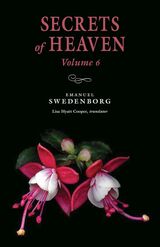
Secrets of Heaven is Emanuel Swedenborg’s magnum opus, a fifteen-volume work that delves into the inner, spiritual meaning of the Bible. Starting from the first verse, Swedenborg goes through Genesis and Exodus verse by verse, sometimes word by word, uncovering the fascinating teachings behind the literal account. By engaging in a careful comparison of passages and tracing individual images and motifs through the Bible, he shows that it contains a profound, coherent, and unified inner meaning.
This sixth volume interprets the inner narrative of Genesis 31–35, in which Jacob leaves Laban’s house, wrestles with God, and reunites with Esau. These acts, Swedenborg argues, are each symbolic of the inner separations, struggles, and unifications that Jesus accomplished on his path to divinity. Swedenborg continues to explore two themes found in previous volumes: the Last Judgment as the ending of an old church and the beginning of a new church, and the correlation between human individuals and the “universal human.”
This new translation, part of the New Century Edition series, makes Swedenborg’s insights into Scripture and his accounts of his spiritual experiences more accessible than ever before.

Secrets of Heaven is Emanuel Swedenborg’s magnum opus, a fifteen-volume work that delves into the inner, spiritual meaning of the Bible. Starting from the first verse, Swedenborg goes through Genesis and Exodus verse by verse, sometimes word by word, uncovering the fascinating teachings behind the literal account. By engaging in a careful comparison of passages and tracing individual images and motifs through the Bible, he demonstrates that it contains a profound, coherent, and unified inner meaning.
In this seventh volume, covering Genesis 36–40, Joseph’s story begins. The literal narrative describes how after dreaming of greatness Joseph is sold into slavery by his jealous brothers and wrongfully imprisoned. The inner narrative, Swedenborg explains, describes the trials and opposition endured by the Lord’s divine humanity, which is represented by Joseph. In this volume Swedenborg also interprets a number of parables in Matthew, relating their meaning to the Lord’s Second Coming. His exploration of the correspondences of the various parts and functions of the body is also continued from the previous volume.
This new translation, part of the New Century Edition series, makes Swedenborg’s insights into Scripture and his accounts of his spiritual experiences more accessible than ever before.
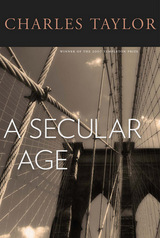
A New York Times Notable Book of the Year
A Times Literary Supplement Book of the Year
A Globe and Mail Best Book of the Year
A Publishers Weekly Best Book of the Year
A Tablet Best Book of the Year
Winner of a Christianity Today Book Award
“One finds big nuggets of insight, useful to almost anybody with an interest in the progress of human society.”
—The Economist
What does it mean to say that we live in a secular age? Almost everyone would agree that we—in the West, at least—largely do. And clearly the place of religion in our societies has changed profoundly in the last few centuries. In what will be a defining book for our time, Charles Taylor takes up the question of what these changes mean—of what, precisely, happens when a society in which it is virtually impossible not to believe in God becomes one in which faith, even for the staunchest believer, is only one human possibility among others.
Taylor, long one of our most insightful thinkers on such questions, offers a historical perspective. He examines the development in “Western Christendom” of those aspects of modernity which we call secular. What he describes is in fact not a single, continuous transformation, but a series of new departures, in which earlier forms of religious life have been dissolved or destabilized and new ones have been created. As we see here, today’s secular world is characterized not by an absence of religion—although in some societies religious belief and practice have markedly declined—but rather by the continuing multiplication of new options, religious, spiritual, and anti-religious, which individuals and groups seize on in order to make sense of their lives and give shape to their spiritual aspirations.
What this means for the world—including the new forms of collective religious life it encourages, with their tendency to a mass mobilization that breeds violence—is what Charles Taylor grapples with, in a book as timely as it is timeless.
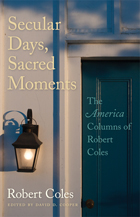
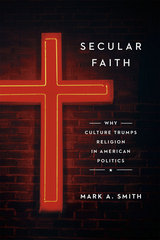
Mark A. Smith provocatively argues that religion is not nearly the unchanging conservative influence in American politics that we have come to think it is. In fact, in the long run, religion is best understood as responding to changing political and cultural values rather than shaping them. Smith makes his case by charting five contentious issues in America’s history: slavery, divorce, homosexuality, abortion, and women’s rights. For each, he shows how the political views of even the most conservative Christians evolved in the same direction as the rest of society—perhaps not as swiftly, but always on the same arc. During periods of cultural transition, Christian leaders do resist prevailing values and behaviors, but those same leaders inevitably acquiesce—often by reinterpreting the Bible—if their positions become no longer tenable. Secular ideas and influences thereby shape the ways Christians read and interpret their scriptures.
So powerful are the cultural and societal norms surrounding us that Christians in America today hold more in common morally and politically with their atheist neighbors than with the Christians of earlier centuries. In fact, the strongest predictors of people’s moral beliefs are not their religious commitments or lack thereof but rather when and where they were born. A thoroughly researched and ultimately hopeful book on the prospects for political harmony, Secular Faith demonstrates how, over the long run, boundaries of secular and religious cultures converge.
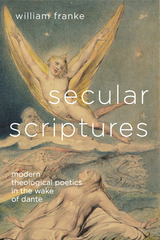
Secular Scriptures examines, through its own original speculative outlook, some of the most compelling exemplars of religious-poetic revelation in modern Western literature. The essays taken as an ensemble revolve around and are bookended by Dante, but they also explore the work of Chaucer, Shakespeare, Milton, Blake, Leopardi, Baudelaire, Dickinson, and Yeats. Looking both backward and forward from the vantage of Dante, Franke explores the roots of secularized religious vision in antiquity and the Middle Ages, even as he also looks forward toward its fruits in modern poetry and poetics. Ultimately, Franke’s analyses demonstrate the possibilities opened by understanding literature as secularized religious revelation.
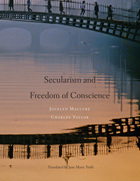
Secularism: the definition of this word is as practical and urgent as income inequalities or the paths to sustainable development. In this wide-ranging analysis, Jocelyn Maclure and Charles Taylor provide a clearly reasoned, articulate account of the two main principles of secularism—equal respect, and freedom of conscience—and its two operative modes—separation of Church (or mosque or temple) and State, and State neutrality vis-à-vis religions. But more crucially, they make the powerful argument that in our ever more religiously diverse, politically interconnected world, secularism, properly understood, may offer the only path to religious and philosophical freedom.
Secularism and Freedom of Conscience grew out of a very real problem—Quebec’s need for guidelines to balance the equal respect due to all citizens with the right to religious freedom. But the authors go further, rethinking secularism in light of other critical issues of our time. The relationship between religious beliefs and deeply-held secular convictions, the scope of the free exercise of religion, and the place of religion in the public sphere are aspects of the larger challenge Maclure and Taylor address: how to manage moral and religious diversity in a free society. Secularism, they show, is essential to any liberal democracy in which citizens adhere to a plurality of conceptions of what gives meaning and direction to human life. The working model the authors construct in this nuanced account is capacious enough to accommodate difference and freedom of conscience, while holding out hope for a world in which diversity no longer divides us.
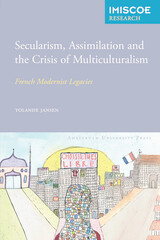
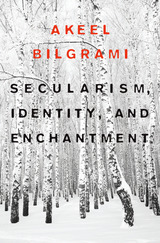
Bringing clarity to a subject clouded by polemic, Secularism, Identity, and Enchantment is a rigorous exploration of how secularism and identity emerged as concepts in different parts of the modern world. At a time when secularist and religious worldviews appear irreconcilable, Akeel Bilgrami strikes out on a path distinctly his own, criticizing secularist proponents and detractors, liberal universalists and multicultural relativists alike.
Those who ground secularism in arguments that aspire to universal reach, Bilgrami argues, fundamentally misunderstand the nature of politics. To those, by contrast, who regard secularism as a mere outgrowth of colonial domination, he offers the possibility of a more conceptually vernacular ground for political secularism. Focusing on the response to Salman Rushdie’s Satanic Verses, Bilgrami asks why Islamic identity has so often been a mobilizing force against liberalism, and he answers the question with diagnostic sympathy, providing a philosophical framework within which the Islamic tradition might overcome the resentments prompted by its colonized past and present.
Turning to Gandhi’s political and religious thought, Bilgrami ponders whether the increasing appeal of religion in many parts of the world reflects a growing disillusionment not with science but with an outlook of detachment around the rise of modern science and capitalism. He elaborates a notion of enchantment along metaphysical, ethical, and political lines with a view to finding in secular modernity a locus of meaning and value, while addressing squarely the anxiety that all such notions hark back nostalgically to a time that has past.
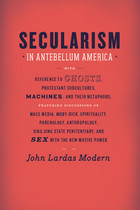
Ghosts. Railroads. Sing Sing. Sex machines. These are just a few of the phenomena that appear in John Lardas Modern’s pioneering account of religion and society in nineteenth-century America. This book uncovers surprising connections between secular ideology and the rise of technologies that opened up new ways of being religious. Exploring the eruptions of religion in New York’s penny presses, the budding fields of anthropology and phrenology, and Moby-Dick, Modern challenges the strict separation between the religious and the secular that remains integral to discussions about religion today.
Modern frames his study around the dread, wonder, paranoia, and manic confidence of being haunted, arguing that experiences and explanations of enchantment fueled secularism’s emergence. The awareness of spectral energies coincided with attempts to tame the unruly fruits of secularism—in the cultivation of a spiritual self among Unitarians, for instance, or in John Murray Spear’s erotic longings for a perpetual motion machine. Combining rigorous theoretical inquiry with beguiling historical arcana, Modern unsettles long-held views of religion and the methods of narrating its past.
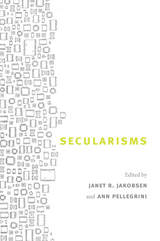
With essays addressing secularism in India, Iran, Turkey, Great Britain, China, and the United States, this collection crucially complicates the dominant narrative by showing that secularism is multifaceted. How secularism is lived and experienced varies with its national, regional, and religious context. The essays explore local secularisms in relation to religious traditions ranging from Islam to Judaism, Hinduism to Christianity. Several contributors explicitly take up the way feminism has been implicated in the dominant secularization story. Ultimately, by dislodging secularism’s connection to the single (and singular) progress narrative, this volume seeks to open spaces for other possible narratives about both secularism and religion—as well as for other possible ways of inhabiting the contemporary world.
Contributors: Robert J. Baird, Andrew Davison, Tracy Fessenden, Janet R. Jakobsen, Laura Levitt,
Molly McGarry, Afsaneh Najmabadi, Taha Parla, Geeta Patel, Ann Pellegrini, Tyler Roberts,
Ranu Samantrai, Banu Subramaniam, Rajeswari Sunder Rajan, Angela Zito
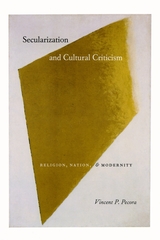
Religion is an undiscovered country for much of the secular academy, which remains deeply ambivalent about it as an object of study. On the one hand, secular scholars agree that it is time to take religion seriously. On the other, these same scholars persist in assuming that religion rests not on belief but on power and ideology. According to Vincent Pecora, the idea of the secular itself is the source of much of the contradiction and confusion in contemporary thought about religion. Pecora aims here to work through the paradoxes of secularization, which emerges in this book as an intractable problem for cultural criticism in the nation-states of the post-Enlightenment West.
Secularization and Cultural Criticism examines the responses of a wide range of thinkers—Edward Said, Talal Asad, Jürgen Habermas, Walter Benjamin, Emile Durkheim, Carl Schmitt, Matthew Arnold, and Virginia Woolf, among others—to illustrate exactly why the problem of secularization in the study of society and culture should matter once again. Exploring the endemic difficulty posed by religion for the modern academy, Pecora makes sense of the value and potential impasses of secular cultural criticism in a global age.
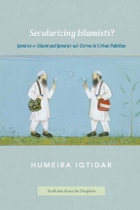
Secularizing Islamists? provides an in-depth analysis of two Islamist parties in Pakistan, the highly influential Jama‘at-e-Islami and the more militant Jama‘at-ud-Da‘wa, widely blamed for the November 2008 terrorist attack in Mumbai, India. Basing her findings on thirteen months of ethnographic work with the two parties in Lahore, Humeira Iqtidar proposes that these Islamists are involuntarily facilitating secularization within Muslim societies, even as they vehemently oppose secularism.
This book offers a fine-grained account of the workings of both parties that challenges received ideas about the relationship between the ideology of secularism and the processes of secularization. Iqtidar particularly illuminates the impact of women on Pakistani Islamism, while arguing that these Islamist groups are inadvertently supporting secularization by forcing a critical engagement with the place of religion in public and private life. She highlights the role that competition among Islamists and the focus on the state as the center of their activity plays in assisting secularization. The result is a significant contribution to our understanding of emerging trends in Muslim politics.
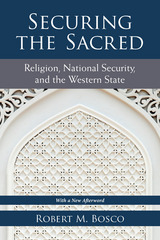
Despite significant theoretical distinctions between securitization on the domestic and the international levels, he finds that the outcome of addressing religion within the context of security hinges upon partnerships. Whereas states may harness the power of international allies, they cannot often find analogous domestic allies; therefore, states that attempt to securitize religion at home are more vulnerable to counterattack and more likely to abandon their efforts. Securing the Sacred makes a significant contribution to the fields of political theory, international relations, Islamic studies, and security/military studies.
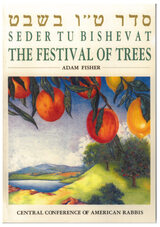
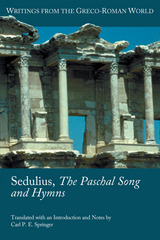
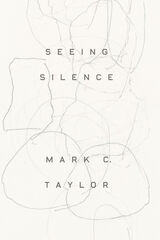
“To hear silence is to find stillness in the midst of the restlessness that makes creative life possible and the inescapability of death acceptable.” So writes Mark C. Taylor in his latest book, a philosophy of silence for our nervous, chattering age. How do we find silence—and more importantly, how do we understand it—amid the incessant buzz of the networks that enmesh us? Have we forgotten how to listen to each other, to recognize the virtues of modesty and reticence, and to appreciate the resonance of silence? Are we less prepared than ever for the ultimate silence that awaits us all?
Taylor wants us to pause long enough to hear what is not said and to attend to what remains unsayable. In his account, our way to hearing silence is, paradoxically, to see it. He explores the many variations of silence by considering the work of leading modern and postmodern visual artists, including Barnett Newman, Ad Reinhardt, James Turrell, and Anish Kapoor. Developing the insights of philosophers, theologians, writers, and composers, Taylor weaves a rich narrative modeled on the Stations of the Cross. His chapter titles suggest our positions toward silence: Without. Before. From. Beyond. Against. Within. Between. Toward. Around. With. In. Recasting Hegel’s phenomenology of spirit and Kierkegaard’s stages on life’s way, Taylor translates the traditional Via Dolorosa into a Nietzschean Via Jubilosa that affirms light in the midst of darkness.
Seeing Silence is a thoughtful meditation that invites readers to linger long enough to see silence, and, in this way, perhaps to hear once again the wordless Word that once was named “God.”
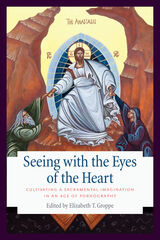
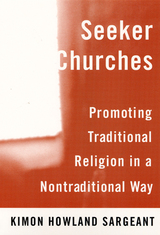
America’s religious landscape is in flux. New churches are springing up and many older churches are redefining themselves to survive. At the forefront of this denominational free-for-all are evangelical “seeker” churches.
These churches target “seekers”—individuals of any faith or denominational background who seek spiritual fulfillment but are not currently affiliated with any specific church. By focusing on this largely untapped group, seeker churches have become one of the fastest-growing religious movements in the country. In his study, Kimon Sargeant provides a sociological context for the rise of these churches by exploring the rituals, messages, strategies, and denominational functions of this emerging form of American evangelical Protestantism.
Featuring live bands, professional lighting and sound systems, and multi-media presentations, seeker churches are attracting many people who have “dropped out” of organized religion. To broaden their appeal, they offer attenders advice on everyday issues ranging from relationships to finance.
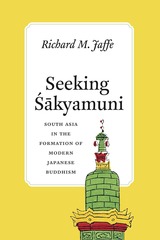
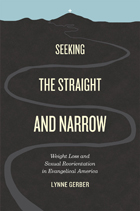

Correspondence of a Church Father.
Jerome (Eusebius Sophronius Hieronymus), ca. 345–420, of Stridon, Dalmatia, son of Christian parents, at Rome listened to rhetoricians, legal advocates, and philosophers, and in 360 was baptized by Pope Liberius. He traveled widely in Gaul and in Asia Minor; and turned in the years 373–379 to hermetic life in Syria. Ordained presbyter at Antioch in 379 he went to Constantinople, met Gregory of Nazianzus and advanced greatly in scholarship. He was called to Rome in 382 to help Pope Damasus, at whose suggestion he began his revision of the Old Latin translation of the Bible (which came to form the core of the Vulgate version). Meanwhile he taught scripture and Hebrew and monastic living to Roman women. Wrongly suspected of luxurious habits, he left Rome (now under Pope Siricius) in 385, toured Palestine, visited Egypt, and then settled in Bethlehem, presiding over a monastery and (with help) translating the Old Testament from Hebrew. About 394 he met Augustine. He died on 30 September 420.
Jerome’s letters constitute one of the most notable collections in Latin literature. They are an essential source for our knowledge of Christian life in the fourth–fifth centuries; they also provide insight into one of the most striking and complex personalities of the time. Seven of the eighteen letters in this selection deal with a primary interest of Jerome’s: the morals and proper role of women. The most famous letter here fervently extols virginity.

Correspondence of a Church Father.
Aurelius Augustine (AD 354–430), one of the most important figures in the development of western Christianity and philosophy, was the son of a pagan, Patricius of Tagaste, and his Christian wife, Monnica. While studying to become a rhetorician, he plunged into a turmoil of philosophical and psychological doubts, leading him to Manichaeism. In 383 he moved to Rome and then Milan to teach rhetoric. Despite exploring classical philosophical systems, especially skepticism and Neoplatonism, his studies of Paul’s letters with his friend Alypius, and the preaching of Bishop Ambrose, led in 386 to his momentous conversion from mixed beliefs to Christianity. He soon returned to Tagaste and founded a religious community, and in 395 or 396 became bishop of Hippo.
From Augustine’s large output the Loeb Classical Library offers that great autobiography the Confessions (in two volumes); On the City of God (seven volumes), which unfolds God’s action in the progress of the world’s history, and propounds the superiority of Christian beliefs over pagan in adversity; and a selection of Letters which are important for the study of ecclesiastical theologians.
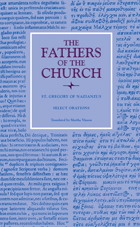

The letters in this volume, written from 1941 to 1978, trace Brooks’s development from fledgling historian to recognized authority. Serving almost as an autobiography of her interactions with her contemporaries, this selection provides a new perspective on Brooks’s personality and growth as a scholar. Richly detailed, chatty, and covering a wide array of subjects, the letters afford an important glimpse into Brooks’s struggles, concerns, and interests.

Pagans’ advocate.
Libanius (AD 314–393) was one of the last great publicists and teachers of Greek paganism. His story, as presented in his Autobiography and the Life by Eunapius, is supplemented by information from a correspondence of over 1500 items and sixty-four extant orations. A native of Antioch, he began his teaching career in Constantinople in 340, but soon had to retire to Nicomedeia, where he became acquainted with St. Basil and influential in the development of Julian’s paganism. After a second tenure at Constantinople he returned home to become professor in Antioch in 354, a position which he held, through many vicissitudes, for the rest of his life.
As sophist of Antioch and a devoted exponent of the traditional Hellenic system of education, Libanius remained deliberately and contemptuously unacquainted with Latin, and deplored its growing influence. Naturally humane in outlook and sympathizing with the local bourgeoisie, he criticized bitterly the encroachments and oppressions of the central administration, and the general cruelty of his day. Sincerely pagan in an increasingly aggressive Christian society, he became an influential voice against religious persecution, official or unofficial. The orations on Julian, to whose memory he remained devoted all his life, were composed between 362 and 365, and present Libanius with a congenial subject, revealing him at the height of his powers and influence.
Also available in the Loeb Classical Library is a two-volume edition of Libanius’ Autobiography and Selected Letters.

Pagans’ advocate.
Libanius (AD 314–393) was one of the last great publicists and teachers of Greek paganism. His story, as presented in his Autobiography and the Life by Eunapius, is supplemented by information from a correspondence of over 1500 items and sixty-four extant orations. A native of Antioch, he began his teaching career in Constantinople in 340, but soon had to retire to Nicomedeia, where he became acquainted with St. Basil and influential in the development of Julian’s paganism. After a second tenure at Constantinople he returned home to become professor in Antioch in 354, a position which he held, through many vicissitudes, for the rest of his life.
As sophist of Antioch and a devoted exponent of the traditional Hellenic system of education, Libanius remained deliberately and contemptuously unacquainted with Latin, and deplored its growing influence. Naturally humane in outlook and sympathizing with the local bourgeoisie, he criticized bitterly the encroachments and oppressions of the central administration, and the general cruelty of his day. Sincerely pagan in an increasingly aggressive Christian society, he became an influential voice against religious persecution, official or unofficial. The orations on Julian, to whose memory he remained devoted all his life, were composed between 362 and 365, and present Libanius with a congenial subject, revealing him at the height of his powers and influence.
Also available in the Loeb Classical Library is a two-volume edition of Libanius’ Autobiography and Selected Letters.
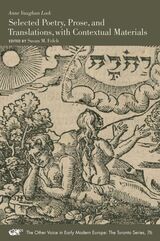
This volume provides a collection of Lock’s works presented in modern spelling, and it includes additional contemporary materials that place her voice in the larger context of the Tudor period, offering insight into the intertwined complexities of political, social, and religious life in sixteenth-century England.
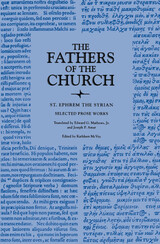
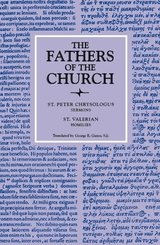
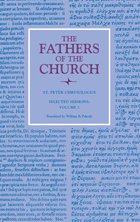
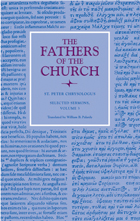
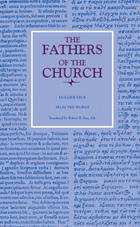
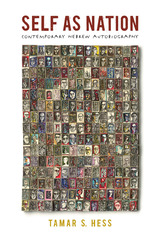
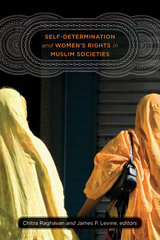
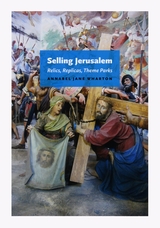
From relics of the True Cross and Templar replicas of the Holy Sepulchre to Franciscan recreations of the Passion to nineteenth-century mass-produced prints and contemporary theme parks, Wharton describes the evolving forms by which the city has been possessed in the West. She also maps those changing embodiments of the Holy City against shifts in the western market. From the gift-and-barter economy of the early Middle Ages to contemporary globalization, both money and the representations of Jerusalem have become progressively incorporeal, abstract, illusionistic, and virtual.
Selling Jerusalem offers a penetrating introduction to the explosive combination of piety and capital at work in religious objects and global politics. It is sure to interest students and scholars of art history, economic history, popular culture, religion, and architecture, as well as those who want to better understand Jerusalem’s problematic place in history.

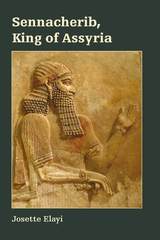
A critical resource for students and scholars of the ancient Near East and the Bible
Josette Elayi’s Sennacherib, King of Assyria is the only biography of Sargon II’s famous son. Elayi traces the reign of Sennacherib in context in order to illuminate more fully the life and contributions of this warlord, builder, innovator, and social reformer—a unique figure among the Assyrian kings. Elayi offers both an evaluation of this royal figure and an assessment of the Assyrian Empire by interpreting the historical information surrounding the decisive events of his reign.
Features:
- Exploration of why Sennacherib did not seize Jerusalem or remove Hezekiah from the throne
- An extensive investigation of annals, royal inscriptions, letters, palace reliefs, clay tablets, and excavation reports
- Maps and tables
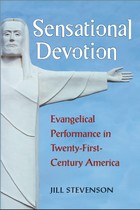
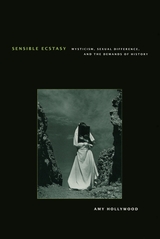
What is particular to these thinkers, Hollywood reveals, is their attention to forms of mysticism associated with women. They regard mystics such as Angela of Foligno, Hadewijch, and Teresa of Avila not as emotionally excessive or escapist, but as unique in their ability to think outside of the restrictive oppositions that continue to afflict our understanding of subjectivity, the body, and sexual difference. Mystics such as these, like their twentieth-century descendants, bridge the gaps between action and contemplation, emotion and reason, and body and soul, offering new ways of thinking about language and the limits of representation.
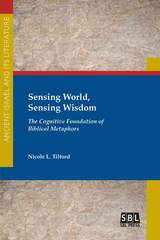
Examine new insights into the conceptual worldview of biblical wisdom communities
The Bible is full of metaphors. On the surface, these metaphors seem like simple literary flourishes that have been added to the text for artistic effect. This book, however, argues that biblical metaphors reflect more basic, prelinguistic cognitive structures. These conceptual metaphors developed out of common concrete experiences and only gradually developed into the complex metaphors that one finds within biblical texts. This book explores how common sensory activities like seeing, hearing, touching, eating, breathing, and walking developed into the abstract metaphors for wisdom that one finds in Proverbs, Job, and Qohelet. Because it traces the cognitive development of a set of related metaphors across several congruent texts, it provides a model by which scholars can trace the cognitive development of biblical metaphors more generally in the Hebrew Bible and other early Jewish and Christian texts.
Features:
- A synthesis of conceptual metaphor theory that provides a workable theory for examining biblical texts
- An analytical framework for studying sensory experience and sensory metaphors in biblical texts
- Diagrams
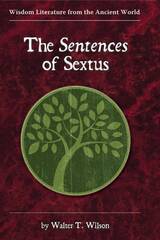

apostle of religious tolerance and a foe of religious establishments.
In Separating Church and State, Timothy Hall combines impressive
historical and legal scholarship to explore Williams's theory of religious
liberty and relate it to current debate. Williams's fierce religious dogmaticism,
Hall argues, is precisely what led to his religious tolerance, making
him one of the most articulate champions of the argument for the necessary
separation of church and state.
"Both timely and provocative. . . . Offers Williams's largely overlooked
but deeply important perspective on the peaceful coexistence of committed
believers of diverse faiths. The book also brings into question crucial
tenets of the United States Supreme Court's First Amendment religion clause
jurisprudence at a time when many are raising questions about it."
-- Marci A. Hamilton, Benjamin N. Cardozo School of Law, New York City
"Hall has the entire Williams corpus under his command, and he plays
the relevant texts like a master organist. He also has the legal corpus
equally at his fingertips. One of the great strengths of his book is that
it bridges the too often separate fields of history and jurisprudence."
-- Edwin Gaustad, author of Liberty of Conscience: Roger Williams in
America
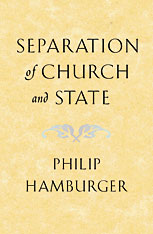
In a powerful challenge to conventional wisdom, Philip Hamburger argues that the separation of church and state has no historical foundation in the First Amendment. The detailed evidence assembled here shows that eighteenth-century Americans almost never invoked this principle. Although Thomas Jefferson and others retrospectively claimed that the First Amendment separated church and state, separation became part of American constitutional law only much later.
Hamburger shows that separation became a constitutional freedom largely through fear and prejudice. Jefferson supported separation out of hostility to the Federalist clergy of New England. Nativist Protestants (ranging from nineteenth-century Know Nothings to twentieth-century members of the K.K.K.) adopted the principle of separation to restrict the role of Catholics in public life. Gradually, these Protestants were joined by theologically liberal, anti-Christian secularists, who hoped that separation would limit Christianity and all other distinct religions. Eventually, a wide range of men and women called for separation. Almost all of these Americans feared ecclesiastical authority, particularly that of the Catholic Church, and, in response to their fears, they increasingly perceived religious liberty to require a separation of church from state. American religious liberty was thus redefined and even transformed. In the process, the First Amendment was often used as an instrument of intolerance and discrimination.
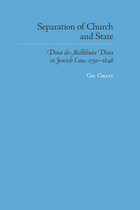
For the Jewish community, the end of the Middle Ages and the emergence of the modern nation-state brought the promise of equal citizenship as well as the possible loss of Jewish corporate identity. The legal maxim dina de-malkhuta dina (the law of the State is law) invoked in Talmidic times to justify the acceptance of the king’s law and qualified in the Middle Ages by Maimonides and Rashbam to include the requirement of consent by the governed underwent further redefinition by Jews in the Napoleonic age. Graff focuses on the struggle between 18th and 19th-century Jewish religious reformers and traditionalists in defining the limits of dina de-malkhuta dina. He traces the motivations of the reformers who, in their zeal to gain equality for the formerly disenfranchised Jewish communities in Western Europe, were prepared to render unto the State compromising authority over Jewish religious life under the rubric of dina de-malkhuta dina was intended to strike a balance between synagogue and state and not to be used as a pretext for the liquidation of the community’s corporate existence.
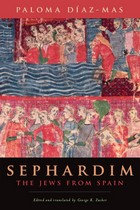
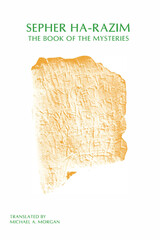
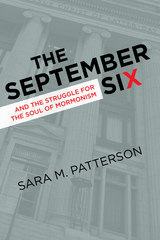
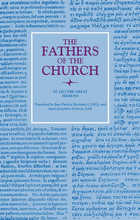

The authors included in this volume—Ilarion, Klim Smoljatic, and Kirill of Turov—are remarkable for both their personal and literary achievements. Appointed in 1051 by Prince Jaroslav the Wise, Ilarion was the first of only two recorded “native” metropolitans of Kiev. His “Sermon on Law and Grace” constitutes the finest piece of eleventh-century Rus’ rhetorical literature. Klim Smoljatic, the second “native” metropolitan of Rus’ (from 1147), is the author of the controversial “Epistle to Foma,” which addresses the debate over the proper nature and limits of Christian learning. Finally, the twelfth-century monk Kirill of Turov is best known for his collection of allegorical lessons and some of the most accomplished sermons of Kievan Rus’. The volume contains the first complete translations of the “Epistle to Foma” and the lessons and sermons of Kirill, as well as an entirely new rendering of the “Sermon on Law and Grace.”
Simon Franklin prefaces the texts with a substantial introduction that places each of the three authors in their historical context and examines the literary qualities as well as textual complexities of these outstanding works of Rus’ literature.
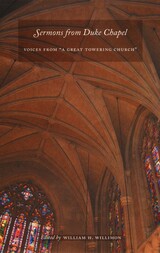
Opening with the sermon preached in June 1935 at the dedication of the Chapel and closing with one by Willimon delivered at the beginning of the 2003–4 school year, this volume presents Protestant Christianity at its most eloquent and prophetic. Some sermons are pure meditations on biblical texts; others are period pieces in the best sense of the term, reflecting on such contemporary concerns as civil rights, the assassinations of Martin Luther King Jr. and Robert F. Kennedy, and the wars in Europe, Vietnam, and Iraq. Willimon provides a brief introduction to each sermon, commenting on the work and thought of the preacher. Diverse in subject and style, the sermons collected in this volume are a treasure for those who love fine preaching, a resource for those studying the history of homiletics, and a light to rekindle the memories of those who have worshiped in the Chapel over the years.
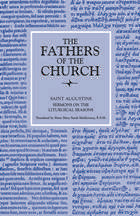
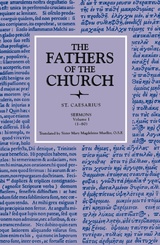
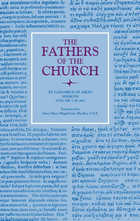
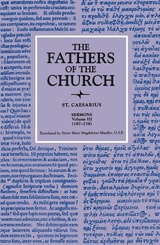
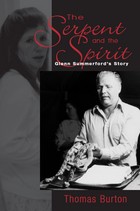
“A snake handler convicted of the attempted murder of his wife by means of serpent bite is serving ninety-nine years in prison. The reader is gradually pulled into an increasingly complex story as Thomas Burton allows the many individuals involved in this event to tell their stories. Readers are less likely to find themselves concerned with what “really” happened than with larger issues they too will become involved in. this is more than a story about the headline ‘preacher tries to murder wife – with rattlesnakes!” it is a story of individuals struggling with their faith and their fate under the steady gaze of their God.” —Ralph W. Hood Jr., winner of the American Psychological Association’s William James Award in the psychology of religion
In this comprehensive, multilayered set of narratives, the story of Glenn Summerford’s fall from grace is told by its participants, through interviews, court documents, and other primary sources. Free of either prejudice against or romanticizing about the snake-handling Holiness religion, this book presents an absorbing story of a fascinating group of people, while allowing the reader to draw his or her own conclusions about Summerford’s guilt or innocence. The Serpent and the Spirit is a startling commentary on truth and its representation, religion and its expression, humanity and its flaws.
Thomas Burton is professor emeritus of English at East Tennessee State University. He is the winner of the Appalachian Consortium Laurel Leaves Award.
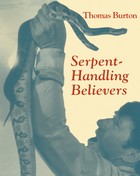
In some remote churches in East Tennessee and nearby states, Jesus’ words in the sixteenth chapter of Saint Mark are taken literally: “and they shall take up serpents; and if they drink any deadly thing, it shall not hurt them.”Members of these churches describe themselves as Pentecostal-Holiness, autonomous groups of Christians with strong traditional religious views and a fundamentalist approach to biblical interpretation. Their strong faith is based largely on personal experience. Handling serpents and fire, laying on the hands of healing, speaking in tongues, and drinking poison are seen as acts of Christian obedience that demonstrate the power of the Holy Spirit.
In the past these very religious people have often been distorted by the media as members of a “snake religion” or a “snake cult” because of their unorthodox beliefs and practices. Thomas Burton seeks to present a more balanced view of this generally misunderstood group in this in-depth study of serpent handlers and their religious culture. Using both oral history and scholarly research, Burton traces the evolution of Christian serpent handling from its apparent beginning in East Tennessee and explores legal and ethical issues associated with this and other unorthodox practices, allowing participants to speak for themselves through personal interviews. The result is both a dramatic presentation, through vivid photography, and a thorough analytical insight into the serpent handlers’ culture.
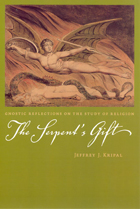
“Because thou hast done this, thou art cursed above all cattle, and above every beast of the field.” With those words in Genesis, God condemns the serpent for tempting Adam and Eve, and the serpent has shouldered the blame ever since. But how would the study of religion change if we looked at the Fall from the snake’s point of view? Would he appear as a bringer of wisdom, more generous than the God who wishes to keep his creation ignorant?
Inspired by the early Gnostics who took that startling view, Jeffrey J. Kripal uses the serpent as a starting point for a groundbreaking reconsideration of religious studies and its methods. In a series of related essays, he moves beyond both rational and faith-based approaches to religion, exploring the erotics of the gospels and the sexualities of Jesus, John, and Mary Magdalene. He considers Feuerbach’s Gnosticism, the untapped mystical potential of comparative religion, and even the modern mythology of the X-Men.
Ultimately, The Serpent’s Gift is a provocative call for a complete reorientation of religious studies, aimed at a larger understanding of the world, the self, and the divine.
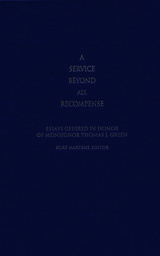
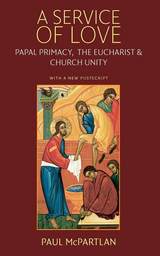
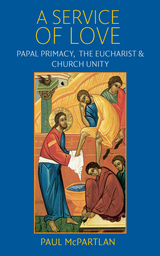
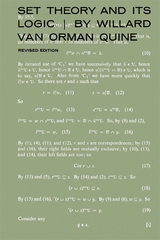
This is an extensively revised edition of W. V. Quine’s introduction to abstract set theory and to various axiomatic systematizations of the subject. The treatment of ordinal numbers has been strengthened and much simplified, especially in the theory of transfinite recursions, by adding an axiom and reworking the proofs. Infinite cardinals are treated anew in clearer and fuller terms than before.
Improvements have been made all through the book; in various instances a proof has been shortened, a theorem strengthened, a space-saving lemma inserted, an obscurity clarified, an error corrected, a historical omission supplied, or a new event noted.
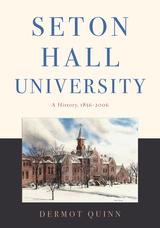
In this vivid and elegantly written history, Dermot Quinn examines how Seton Hall was able to develop as an institution while keeping faith with its founder’s vision. Looking at the men and women who made Seton Hall what it is today, he paints a compelling picture of a university that has enjoyed its share of triumphs but has also suffered tragedy and loss. He shows how it was established in an age of prejudice and transformed in the aftermath of war, while exploring how it negotiated between a distinctly Roman Catholic identity and a mission to include Americans of all faiths.
Seton Hall University not only recounts the history of a great educational institution, it also shares the personal stories of the people who shaped it and were shaped by it: the presidents, the priests, the faculty, the staff, and of course, the students.
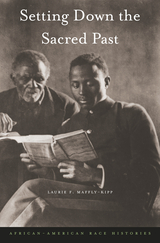
As early as the 1780s, African Americans told stories that enabled them to survive and even thrive in the midst of unspeakable assault. Tracing previously unexplored narratives from the late eighteenth century to the 1920s, Laurie Maffly-Kipp brings to light an extraordinary trove of sweeping race histories that African Americans wove together out of racial and religious concerns.
Asserting a role in God's plan, black Protestants sought to root their people in both sacred and secular time. A remarkable array of chroniclers—men and women, clergy, journalists, shoemakers, teachers, southerners and northerners—shared a belief that narrating a usable past offered hope, pride, and the promise of a better future. Combining Christian faith, American patriotism, and racial lineage to create a coherent sense of community, they linked past to present, Africa to America, and the Bible to classical literature. From collected shards of memory and emerging intellectual tools, African Americans fashioned stories that helped to restore meaning and purpose to their lives in the face of relentless oppression.
In a pioneering work of research and discovery, Maffly-Kipp shows how blacks overcame the accusation that they had no history worth remembering. African American communal histories imagined a rich collective past in order to establish the claim to a rightful and respected place in the American present. Through the transformative power of storytelling, these men and women led their people—and indeed, all Americans—into a more profound understanding of their interconnectedness and their prospects for a common future.
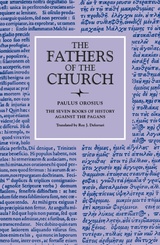
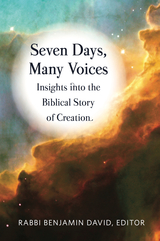
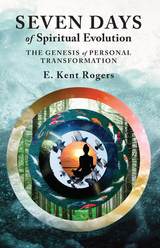
In Seven Days of Spiritual Evolution: The Genesis of Personal Transformation, Rogers responds to a growing movement of biblical literalism by turning to eighteenth-century spiritual teacher Emanuel Swedenborg, who wrote prolifically about how the deeper symbolic meanings of Bible text can provide spiritual guidance. Using Swedenborg’s language of correspondences, Rogers shows us how Genesis 1 describes our psychological landscape as it unfolds along the horizons of our inner journey toward God. He draws insightful parallels between the different stages of our spiritual growth and contemporary psychotherapeutic treatment—from person-centered to cognitive to behavioral therapies. To make the intangible tangible, Rogers accesses what he has learned as both a mental health counselor and spiritual practitioner to offer workable methods for improving how we think and behave on a daily basis.
Intended as a tool for anyone who is interested in personal and spiritual development, Seven Days of Spiritual Evolution weaves psychology, spirituality, and everyday experience into a practical approach to growth. “Faith isn’t about drawing lines in the sand or judging others,” Rogers says, “it’s about learning how to love others and to love God.” Ultimately, it’s about opening our hearts to the Bible as a useful and never-ending guidebook for God’s all-loving, redeeming, and merciful work in the world.

There is no society without right and wrong. There is no society without sin. But every culture has its own favorite list of trespasses. Perhaps the most influential of these was drawn up by the Church in late antiquity: the Seven Deadly Sins. Pride, sloth, gluttony, envy, anger, lust, and greed are not forbidden acts but the passions that lead us into temptation. Aviad Kleinberg, one of the most prominent public intellectuals in Israel, examines the arts of sinning and of finger pointing. What is wrong with a little sloth? Where would haute cuisine be without gluttony? Where would we all be without our parents’ lust? Has anger really gone out of style in the West? Can consumer culture survive without envy and greed? And with all humility, why shouldn’t we be proud?
With intellectual insight and deadpan humor, Kleinberg deftly guides the reader through Jewish, Christian, and Greco-Roman thoughts on sin. Each chapter weaves the past into the present and examines unchanging human passions and the deep cultural shifts in the way we make sense of them. Seven Deadly Sins is a compassionate, original, and witty look at the stuff that makes us human.
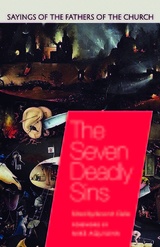
Sacred Scripture did not neatly list the seven deadly sins, so where did this tradition come from? Unsurprisingly, it can be traced back to the Church Fathers. But were there eight or seven? In a sense, the answer is “both.” The tradition of the capital sins has a rich development in the patristic era, not only in the presentation of the list of vices but in the preaching and teaching of the early shepherds of the Church. So how do the capital sins spawn other vices in the soul? How does one cultivate the virtues that heal the soul from those vices? How are gluttony and lust related? Is sadness really a vice? How is vainglory different from pride? What role does almsgiving have in soothing the passion of anger? The Fathers of the Church answer these questions and more in this volume.
The capital vices are the gateway drugs to countless sins. The path of the book descends through the vices, culminating with their queen ruler, pride. The words of the Fathers will assist the reader in being more realistic about the attacks upon the soul. The text should also be edifying and medicinal. Since each chapter begins with vice and ends with virtue, one’s path through the chapters represents a sort of ascent out of vice and into the freedom of the virtues. The text gives special attention throughout to the thought of Augustine of Hippo, Evagrius of Pontus, John Cassian, Gregory the Great, and Maximus the Confessor.
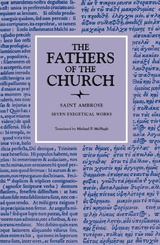
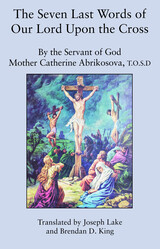

Tracing the views of the church through its official and unofficial publications and through interviews with dozens of Adventist informants, Laura Vance reveals a significant shift around the turn of the century in women's roles advocated by the church: from active participation in the functioning, spiritual leadership, teaching, and evangelism of Adventism to an insistence on homemaking as a woman's sole proper vocation. These changes in attitude, Vance maintains, are inextricably linked to Adventism's shift from sect to church: in effect, to its maturation as a denomination.
Vance suggests that the reemergence of women in positions of influence within the church in recent decades should be viewed not as a concession to secular feminist developments but rather as a return to Adventism's earlier conception of gender roles. By examining changes in the movement's relationship with the world and with its own history, Seventh-day Adventism in Crisis offers a probing examination of how a sect founded on the leadership of women came to define women's roles in ways that excluded them from active public participation and leadership in the church.
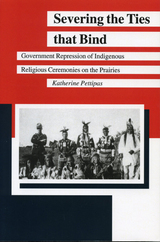

Sex and Gender: Christian Ethical Reflections contains some of the subject’s most important analyses in recent decades. The collection covers a wide range of topics: same-sex marriage, sexual minorities and biblical interpretation, sex and power, sexual harassment and sexual abuse, HIV/AIDS and prevention strategy, the military and masculinities, mobile porn and sexting, human trafficking, moral discernment, and more. Contributors represent various theological traditions and draw on scriptural texts as well as such disciplines as philosophy, sociology, psychology, and the life sciences. Each essay is followed by a set of discussion questions—for the classroom or for students to use as an assignment outline—and suggestions for further reading and research. Teachers and students of Christian ethics will appreciate this multidisciplinary approach to one of the most divisive and controversial issues in contemporary culture.
READERS
Browse our collection.
PUBLISHERS
See BiblioVault's publisher services.
STUDENT SERVICES
Files for college accessibility offices.
UChicago Accessibility Resources
home | accessibility | search | about | contact us
BiblioVault ® 2001 - 2024
The University of Chicago Press









